After record rainfall during August in some parts of Iowa, it’s a banner year for mushrooms. Naturalist and photographer Eileen Miller has been taking spectacular pictures of fungi in the Raccoon River watershed. So this week, Bleeding Heartland is taking a break from wildflowers to focus native Iowa fungi. Eileen contributed a dozen photos and some commentary, which I’ve enclosed below. To my knowledge, I had never seen most of those mushroom species before.
This post is also a mid-week open thread: all topics welcome.
FUNGI–A DELIGHTFUL FEAST FOR THE EYES
guest post by Eileen Miller
With all the rain we’ve had recently there has been a profusion of mushrooms and other fungi popping up in our lawns, gardens, woodlands, grasslands, etc.
What we’re seeing are the spore-bearing fruiting bodies. The vegetative part of the fungus, (mycelium), consists of many threadlike strands of cells, which penetrate whatever substrate the fungus depends on for its survival.
Some fungi, (saprophytes), grow on dead plant and animal material.
Some, (parasites), grow on living plants or animals, either killing or weakening their host.
Some fungi, (mycorrhiza), form mutually beneficial relationships with a living plant such as a tree. In this relationship the fungal mycelium grows in close juxtaposition to the tree roots, providing the tree with nutrients, and in return, absorbing sugars from the tree roots, which have been manufactured in the it’s leaves by the process of photosynthesis.
All fungi play an important role in the functioning of the environment in which they live.
Attached are photos of a few of these mysterious, ephemeral apparitions. It’s certainly worth a walk in the woods to see what you can find.
Mushroom species just after a rain
White Coral Jelly fungus (Tremella species)
Scarlet Cup (Sarcoscypha species) fruits on dead twigs
Collared Earth Star (Gastrum triplex) fruits on ground under hardwoods
Mushroom species
White Bird’s Nest Fungus (Crucibulum leave) found on dead twigs, leaf mold, rotting wood. The ‘eggs’ contain the spores
Amanita species mushroom (poisonous)
Velvet Stem (Flammulina velutipes) grows on dying trees
Dead Man’s Fingers (Xylaria polymorpha) grows at the base of rotting trees
Witch’s Butter (Tremella mesenterica)
Chicken of the Woods (Laetiporus sulphureus) The outer edges of this fungus are edible. The inner parts become too tough.
Coral Fungus species

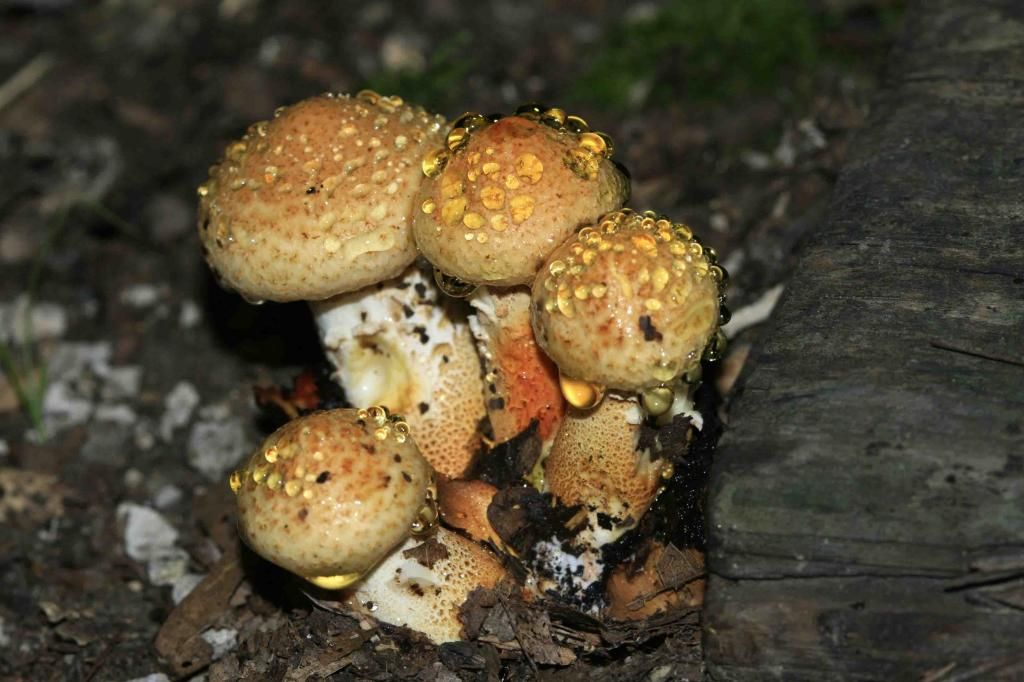


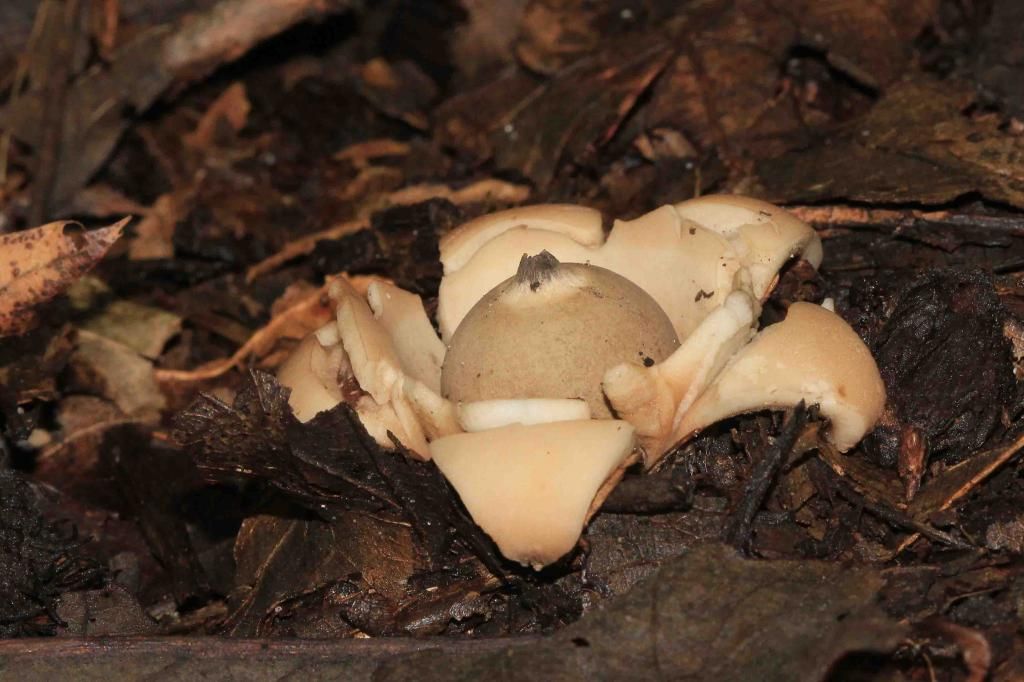

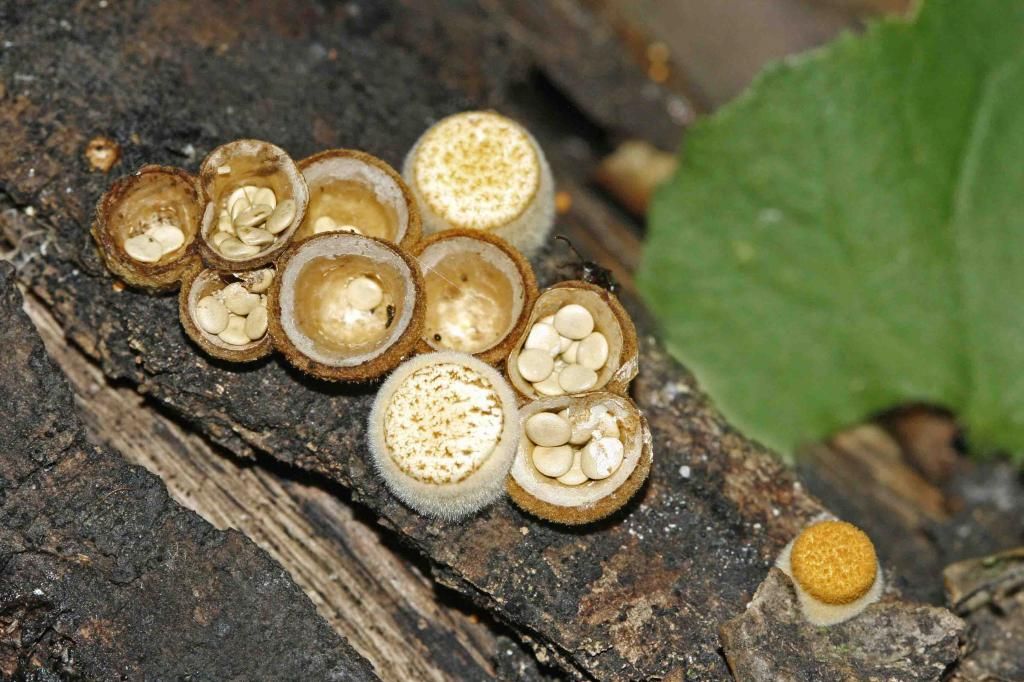
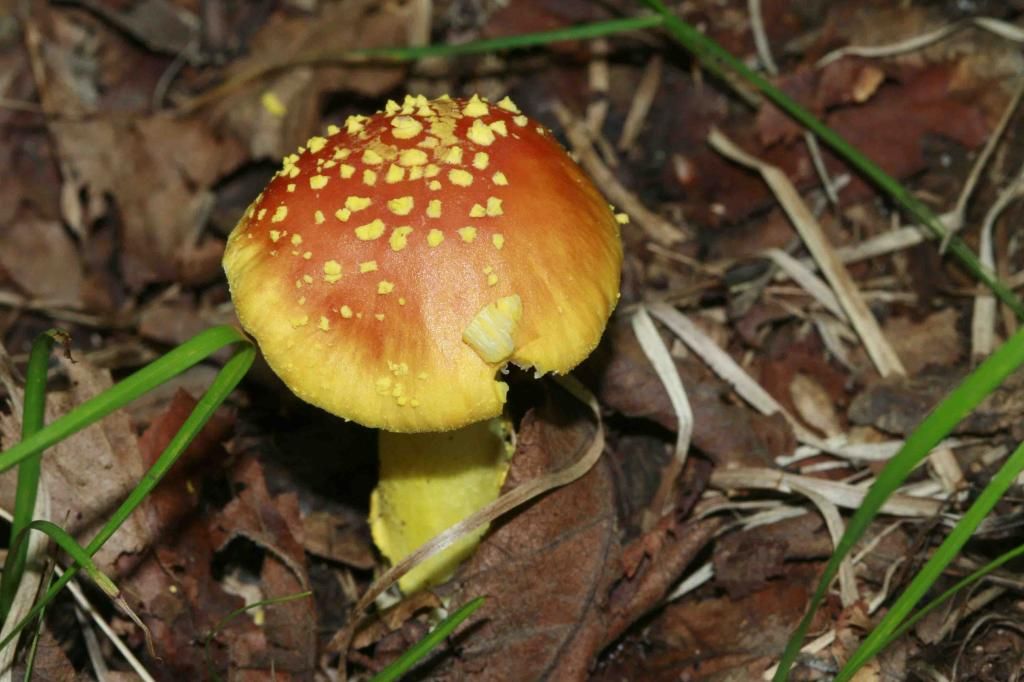
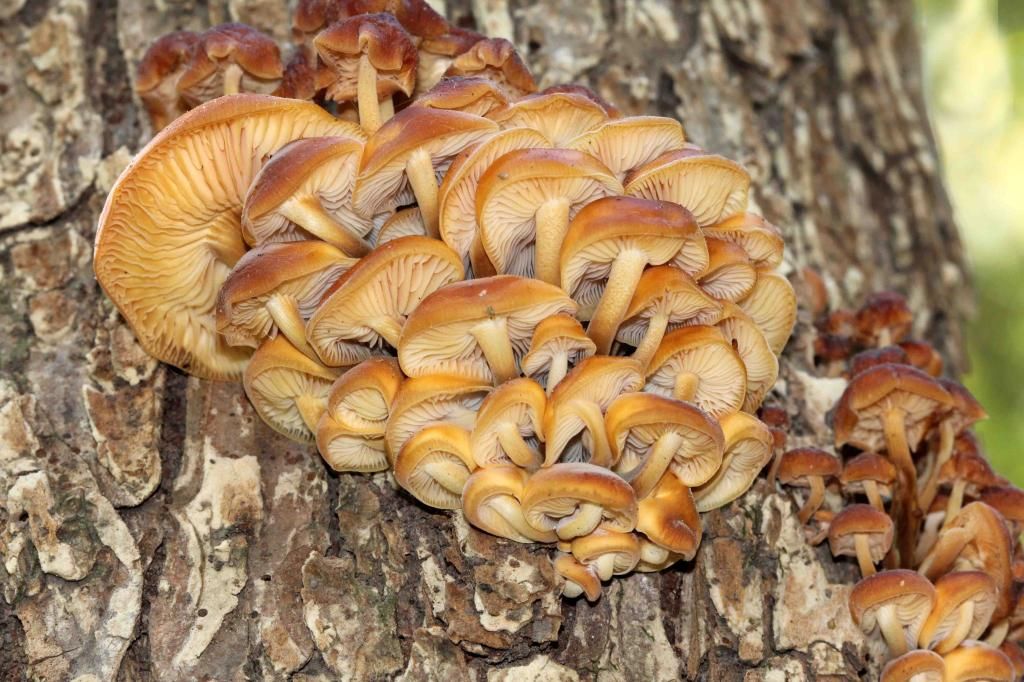
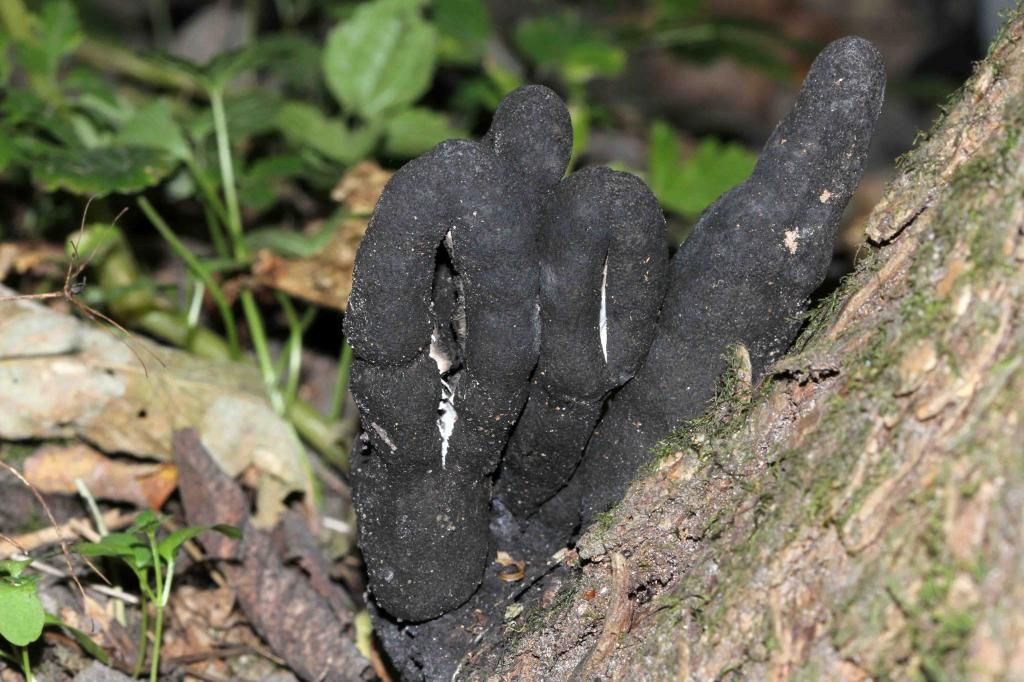
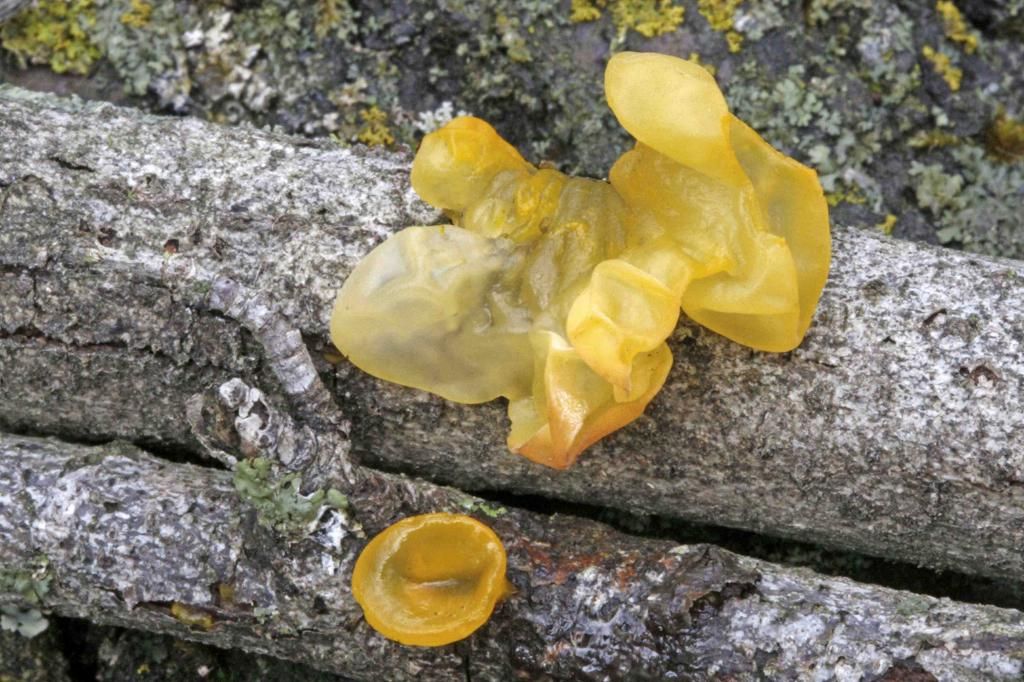
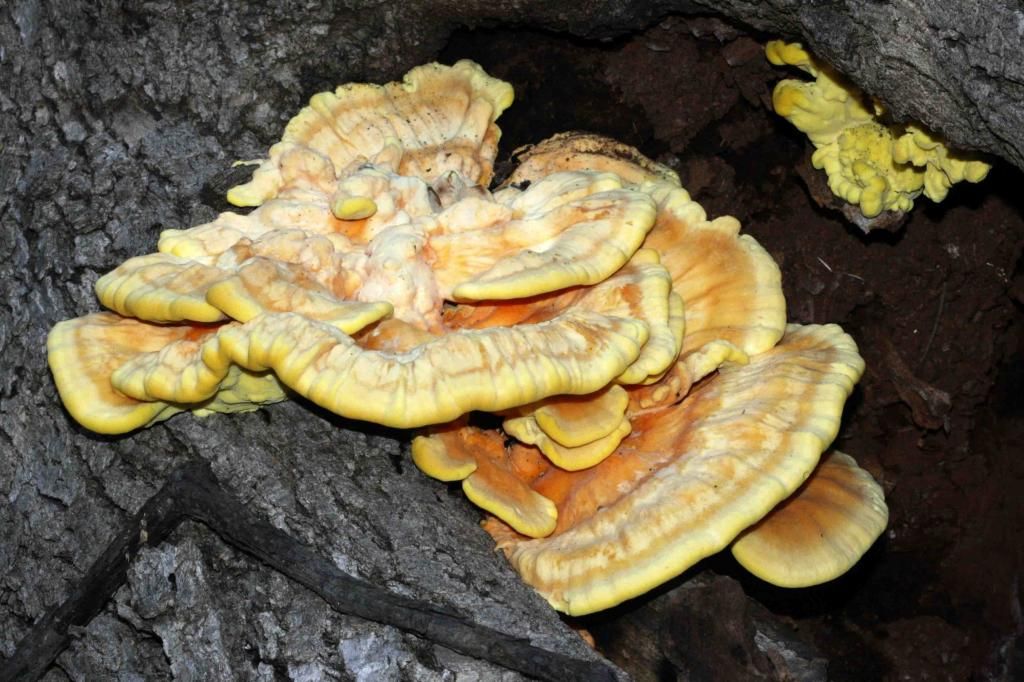
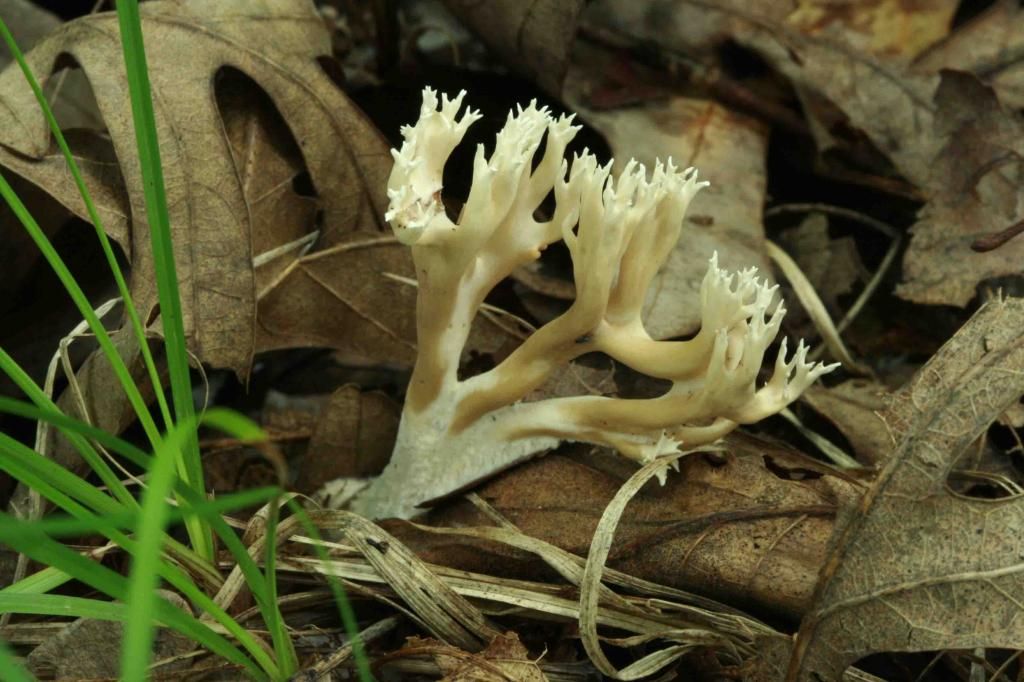
1 Comment
Thank you for posting these photos
And thank you to Eileen Miller for taking them.
PrairieFan Thu 11 May 12:26 PM